Back to top: Ceramics from Unit J3
Methodology
All ceramic sherds from Tell Mozan are processed according to a standardised procedure in the field, and analysed based on a specific set of typological criteria, supervised by Marilyn Kelly-Buccellati.
A total of 13,713 sherds have been collected and analysed for J3. Of these, 1893 are shape sherds, and 11,820 are body sherds. The individual sherds for J3 can be found in the righthand menu under qp pottery.
The ceramics primarily come from Mittani strata (71.4%), and there is a significant amount from Middle Assyrian strata (14.5%).
Smaller numbers occur in earlier periods, in LC 3 (0.3%) and ED III (2.2%).*

*Note on the charts: The charts are based on the stratigraphic emplacement of the sherds, not their typology. For the ceramic typology of Tell Mozan, see the CERAMICS book (Horizons).
Back to top: Ceramics from Unit J3
Wares
By far the most common ware at Tell Mozan is Chaff Temper ware (CH): this is also the case for J3 in most periods. The finer version FC is also common. Pebble Tempered ware (P), Calcite Temper ware (RC), and Wet Smoothed ware (WS) appear in smaller numbers.
Late Chalcolthic wares are represented in the few LC 3 strata from J3: Late Chalcolithic Chaff Temper Ware (LCH), Late Chalcolithic Fine Ware (LCF), Tan Slipped Ware (LCT). These wares find their way into later strata, with the addition of Late Chalcolithic Gray Ware (LGR). Examples of these sherds can be found in the J3 assemblages.
For more on wares at Tell Mozan, see CERAMICS book wares.
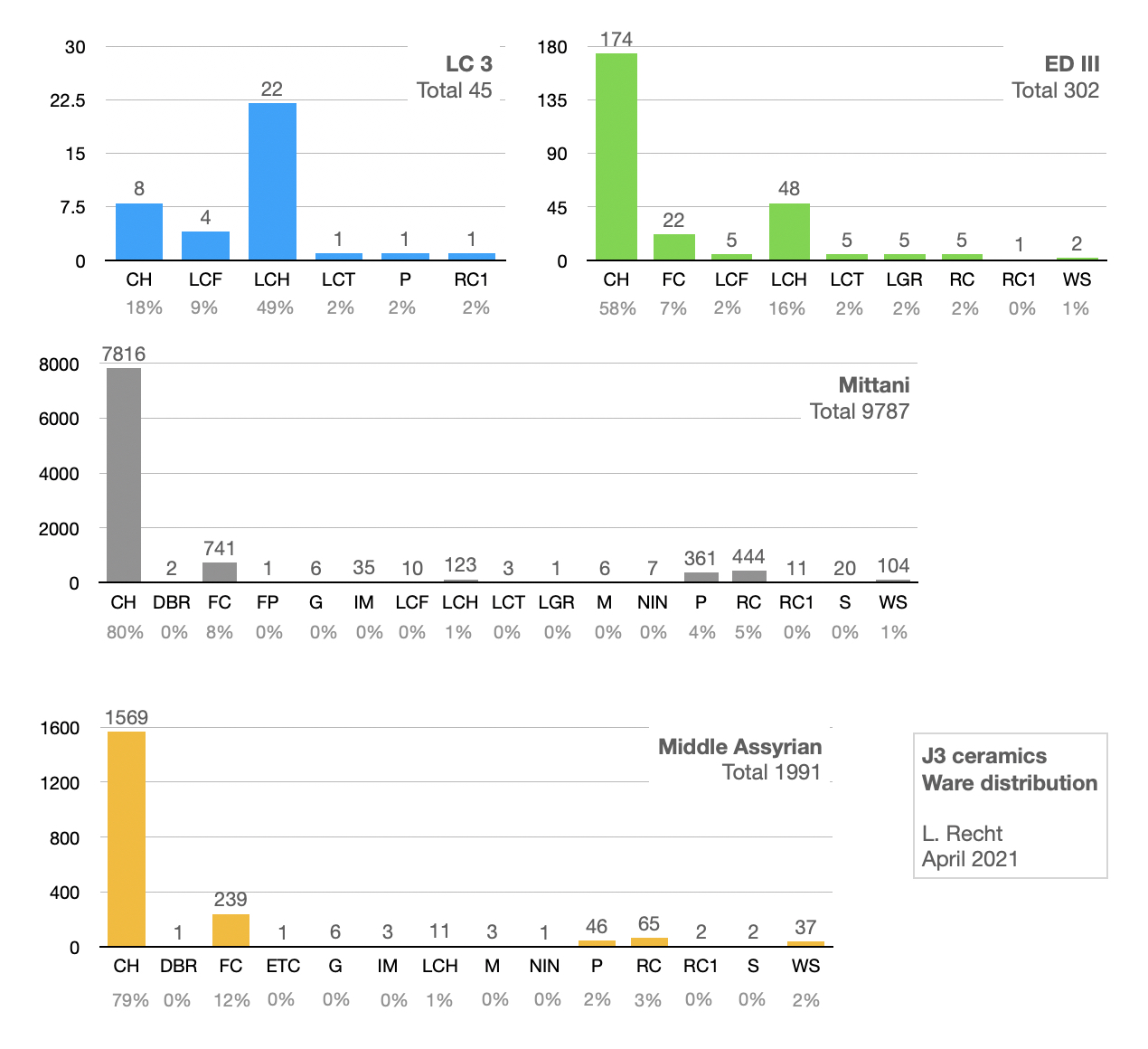
Back to top: Ceramics from Unit J3
Shapes
In all periods, bowls and jars are the most common main shapes, with bowls in higher numbers. Plates and cups also occur, and stands in the Mittani and Middle Assyrian strata. A few casseroles, a characteristic LC 3 shape, were found in ED III strata.
For more on shapes at Tell Mozan, see CERAMICS book shapes.
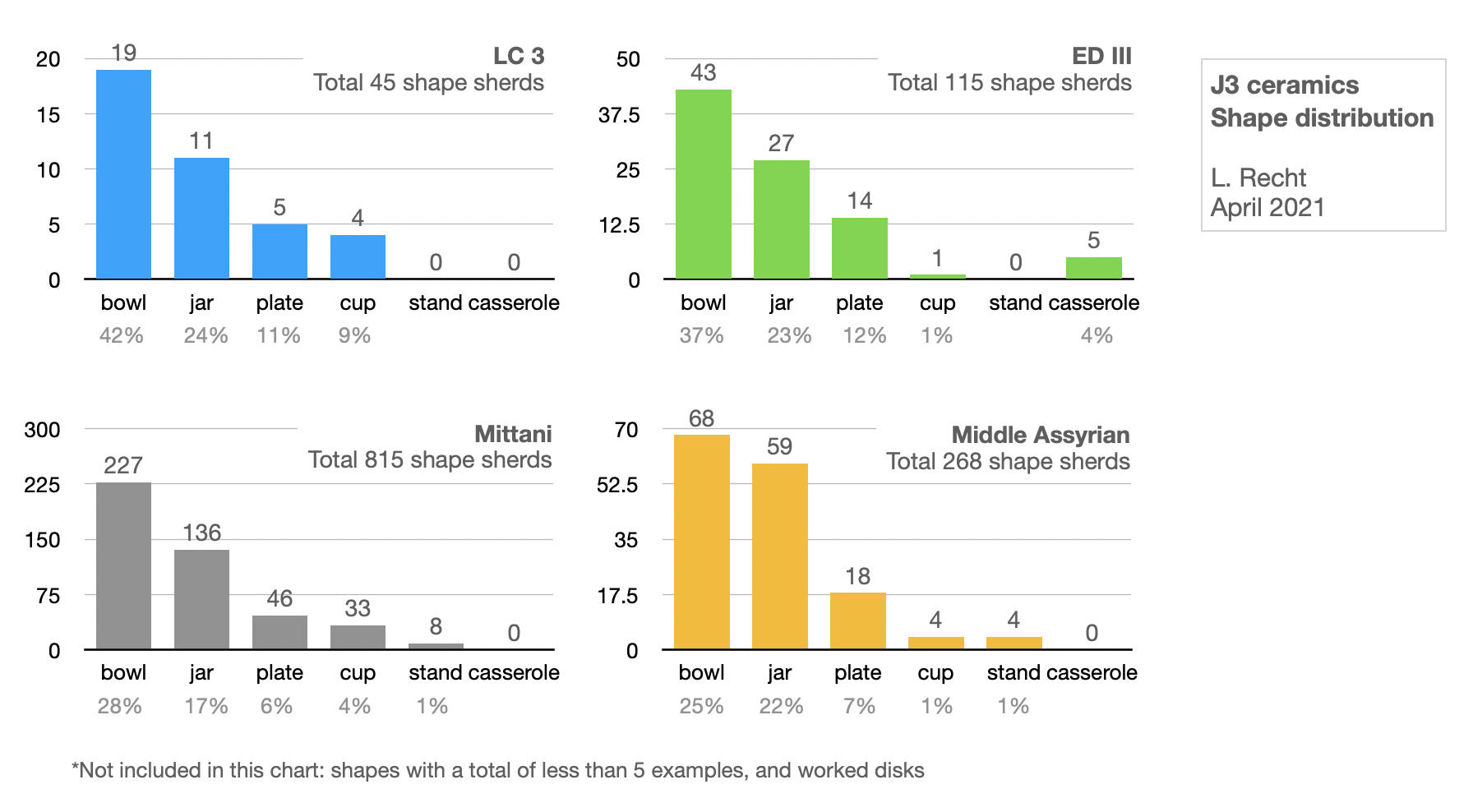
*Note: Shapes with less than five examples in total were not included in the statistics here.
Back to top: Ceramics from Unit J3
Sub-shapes
Not enough shape sherds were found in the LC 3 strata to produce meaningful statistics concerning their sub-shapes. However, we can note that a characteristic shape of the LC 3 bowls, the hammer-rim bowl, is prevalent also in later periods. In the Mittani and Middle Assyrian strata, deep bowls are the most common type of bowl.
Only the Mittani strata contained a significant amount of cup sherds (a total of 33). These include not only the most common types of cups at Mozan (conical cups and other cups), but also a few examples of hemispherical and round sided cups. The two latter are part of earlier (ED II) material found in later strata.
For the jars, we see that hole mouth jars predominate in the ED III period (although we only have a small assemblage to compare), while various types of necked jars are more popular in the Mittani and Middle Assyrian strata (especially restricted neck, flaring neck, short necked and straight necked versions).

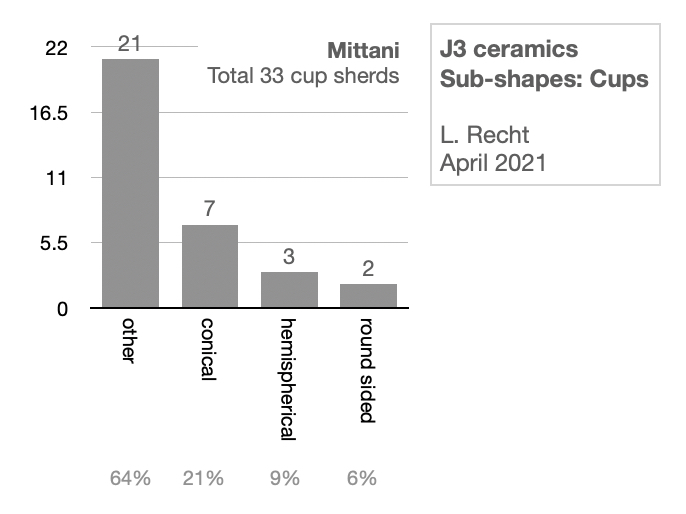

Back to top: Ceramics from Unit J3
Assemblages
Some ceramic sherds from J3 have been arranged in assemblages for various points of interest.
The assemblages were born to show specific informations (typical or unusual sherds in a feature/stratum, typical decorations, typical shapes or ware). They are usually belong to a specific feature or stratum, but may also come from several features to show, for example, specific decorative patterns. The assemblages from J3 especially focus on the Late Chalcolithic sherds, both those in LC 3 strata and those in later ones.
For the ceramics at Tell Mozan in general and the typology and stratigraphic characteristics, go to the digital CERAMICS book.
Back to top: Ceramics from Unit J3
Ceramic items
Not all objects classified as ceramics are the sherds analyzed above by the ceramics specialists. A small number (15 for J3) are classifed as ceramic items because their function is more interesting than their composition, the focus of ceramics analysis. These consist of whole or restorable vessels, handles, potters’ marks and curiosities. Some of these are listed below:
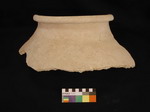 Jar mouth J3qi4.3 |
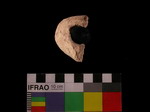 Handle J3q156.1 |
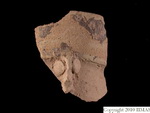 Face J3qi310.2 |
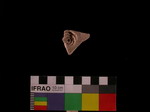 Potters's mark J3q549.2 |
Back to top: Ceramics from Unit J3